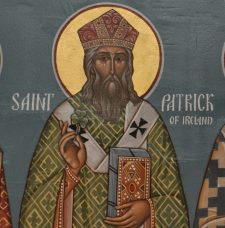 “What casts a far greater shadow than his monument, however, is St. Patrick’s Day. And that day in the middle of March raises a significant question: Should Christians celebrate St. Patrick’s Day? If you do, you might want to consider wearing orange. Orange?”
“What casts a far greater shadow than his monument, however, is St. Patrick’s Day. And that day in the middle of March raises a significant question: Should Christians celebrate St. Patrick’s Day? If you do, you might want to consider wearing orange. Orange?”
(Stephen Nichols – Ligonier Ministries) When it comes to Saint Patrick, the true story is even more exciting than the legend and the myth. The facts are far better than the fable. This day that belongs to St. Patrick has become about leprechauns, shamrocks, pots of gold, and green—green everywhere. …
Famously, the City of Chicago dumps forty pounds of its top-secret dye into the river. A green racing stripe courses through the city. But long before there was the St. Patrick of myth, there was the Patrick of history. Who was Patrick?
Patrick was born in 385 in Roman Britannia in the modern-day town of Dumbarton, Scotland. Patrick opens his autobiographical St. Patrick’s Confession with these opening lines:
My name is Patrick. I am a sinner, a simple country person, and the least of all believers. I am looked down upon by many. My father was Calpornius. He was a deacon; his father was Potitus, a priest, who lived at Bannavem Taburniae. His home was near there, and that is where I was taken prisoner. I was about sixteen at the time.
Patrick skips over much of his first sixteen years. But who can blame him? At sixteen and being captured by barbarian Irish pirates is a pretty exciting place to begin a story. When the pirates landed on the Irish coast, they took Patrick about 200 miles inland where he was a shepherd and farm laborer. Six years passed and Patrick had either a vivid dream or a vision in which he was shown an escape route. Emboldened, Patrick made his break form his captors, traveling back over the 200 miles to the shoreline. As he approached the docks, a British ship stood waiting. The sails unfurled and Patrick was home. But he didn’t stay long.